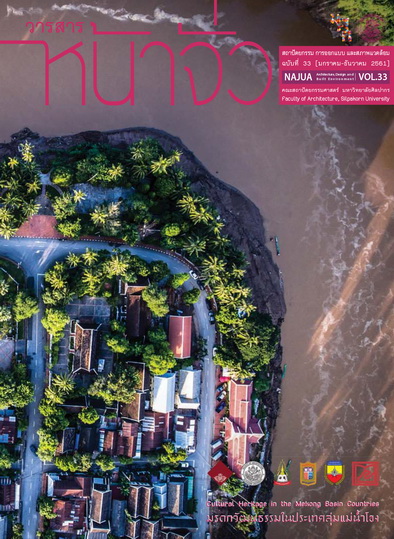Prasat Nakhon Luang, Ayutthaya
Keywords:
ปราสาทนครหลวง, ปราสาทปาปวน, อยุธยา, เมืองพระนคร, สมเด็จพระเจ้าปราสาททอง, Prasat Nakhon Luang, Prasat Baphuon, Ayutthaya, Ankor, King PrasartthongAbstract
Prasat Nakhon Luang, Ayutthaya
Kreangkrai Kirdsiri
Isarachai Buranaut
Bunyakorn Wachirathianchai
Faculty of Architecture, Silpakorn University
Paramaporn Sirikulchayanont
Faculty of Painting Sculpture and Graphic Arts, Silpakorn University
This study aims to examine 3 main research questions: 1) what is the motivation and its context of the construction of Prasat Nakhon Luang 2) what Prasat in Angkor which Prasat Nakhon Luang probably got an inspiration from 3) weather Prasat Nakhon Luang was completely constructed. This study argues that Prasat Nakhon Luang was built by King Prasartthong as a symbol to show his righteousness in the government because he was enthroned and established a new dynasty called ‘Prasartthong dynasty’. This dynasty might have a relation with the monarchy of Angkor. As it reflects through the adapting of architectural pattern and layout plan of the style of Angkor’s Prasat to use with Prasat Nakhon Luang. This Prasat was also used a place for King Prasartthong to stay overnight during his pilgrimage to worship the Buddha’s footprint in Saraburi and performing royal rituals.
Moreover, this study suggests that the architectural style and layout plan of Prasat Nakhon Luang might be related to Prasat Baphuon. As the Royal Chronicles of Ayutthaya mentions that a group of observators were sent by King Prasartthong to survey at a Prasat called Krung Kampush Pradesh in Angkor. This might be used as its historical context. This study also purposes that Prasat Baphuon located in the royal palace was significant as Prasat of the Ankor city.
Additionally, the architectural style and layout plan of Prasat Nakhon Luang clearly reflects its closer relation with Prasat Baphuon which has of 29 canopies rather than Angkor Wat.
Finally, this study argues that Prasat Nakhon Luang was completely constructed and used as a place for king to stay overnight and perform royal rituals. However, most of the great Prasat were typically built by woods according to the architectural tradition. Without a good maintaining, they were ruined. Therefore, after the renovation of its upper level’s base in order to install 4 Buddha’s footprints in the later period, archaeological evidence are thus disturbed. These cause many scholars suggested that Prasat Nakhon Luang was not completely constructed.





